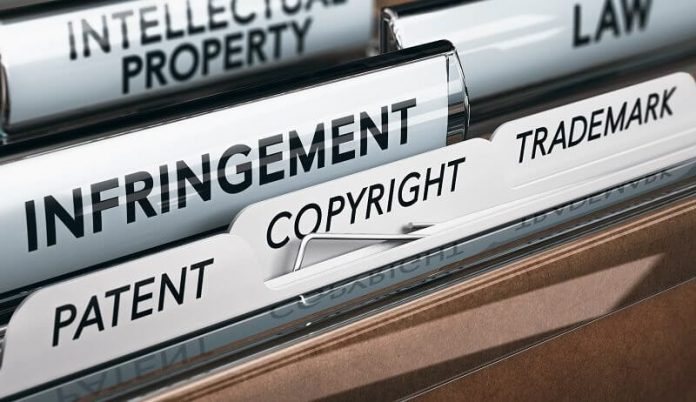This article is written by Praveer Shukla, pursuing a Diploma in Intellectual Property, Media, and Entertainment Laws from LawSikho. The article has been edited by Aatima Bhatia (Associate, LawSikho) and Smriti Katiyar (Associate, LawSikho).
Table of Contents
What is copyright?
Copyright is a kind of intellectual property right protection. The protection of copyright is available for original work. Copyright is also known as the author’s right. It is a right that is given to a creator for their literary and artistic works. Its work covers a wide range from books, music, paintings, computer programs, databases, advertisements, maps, sculptures, films, and technical drawings. Copyright can be obtained for either published or unpublished works.
What can be protected using copyright?
Under the Copyright Act, 1957 various works are eligible for copyright protection, such as:-
- Sound recordings,
- Musical compositions,
- Audio-visual works like TV shows, movies, online videos, etc.,
- Written works like books, articles, etc.,
- Visual works like paintings, posters, etc.,
- Computer software and video games,
- Dramatic works.
Rights granted by copyright
The main aim of the Copyright Act, 1957 is to protect the time, effort, and creativity of the creator’s work. The Act grants certain rights to the copyright owner. Some of the rights are as follows:-
- The right to reproduce work. The copyright owner gets exclusive rights to reproduce their works.
- The copyright owner gets the right to prepare the derivative works. Derivative works are works that are based on the original work.
- The copyright owner has the right to distribute the copies of work by sale, lease, or any other mode of transfer of ownership.
- The owner of the copyright has the right to perform the work publicly and also the right to display the work publicly.
- The owner has the right and option to transfer the exclusive rights to any other person.
Limitations and exceptions
Copyright ownership is very effective for the creators. However, copyright has its limitations. The copyright law does not cover the actual concepts, facts, ideas, or techniques contained in the copyrighted work. However, some things which are not covered by copyright law are covered under other forms of intellectual property. In many jurisdictions, copyright law gives an exception to the copying of works for commentary or other related uses. There are several exceptions to copyright ownership, of which the most significant one is the fair use exception. Other exceptions to copyright ownership are:-
- The copyright laws allow archives and libraries to make copies for preservation purposes.
- Under copyright laws, protection is granted to the original expression of ideas. It does not grant protection to the ideas themselves. (Baker v. Selden case)
- Copyright law allows the owner of a computer program to make a backup copy of their works. Such a copy of a copyrighted work is not considered an infringement.
- Performance and displays for religious services, transmissions to the handicapped and blind, and content related to classroom education are allowed under copyright law.
- Certain authorised entities are allowed to reproduce and distribute the copies of certain works in specialised formats especially for the use of the blind or others with disabilities.
- The purchasers of legal copies are allowed to re-distribute or dispose of those copies.
Transfer, licensing, and assignment
Copyright transfer means the transfer of property rights by the right-holder to another person. Such transfer occurs as a part of a huge asset purchase or sale or may occur on their own. Copyright transfer is similar to assignment agreement as both provide ownership records and transfer the rights of all parties. In simple terms, copyright transfer means the transfer of copyright by the copyright owner to some other individual or a third party.
With the transfer of copyright ownership, the assignee becomes eligible for all the rights that are related to the copyright of the transferred work. The assignee becomes eligible for all the rights concerning the copyright of the transferred work. The assignee shall be treated as the copyright owner concerning such rights. The assignor will be treated as the owner of the copyright concerning the unassigned rights.
A copyright assignment is valid only if it is written and duly signed by the assignor or their authorised agent or representatives. When the time of transfer is not mentioned in the assignment contract, it is to be considered as 5 years from the date of transfer. If the regional extent is not stipulated, it will be applicable across India. Transfer of copyright is mentioned in Section 19 of the Copyright Act, 1957.
In Saregama India Ltd. v. Suresh Jindal and Ors, it was held by the Court that the owner of the copyright may assign the copyright to any person either wholly or partially. This case is a leading case on whether the assignment of copyright for an unlimited period or a limited period and the breach of any conditions mentioned in the agreement will lead to the termination of the agreement or not.
In the present case, the Petitioners reached the Court to obtain a restraining order against the Respondents for restraining them from selling any records, discs, cassettes, or any other sound recordings concerning the films produced by the Respondent during the period of the agreement.
After carefully analysing the facts presented by both the parties to the Court, the Court held that the agreements entered into by the Petitioner and the Respondent mentioned the assignment of copyright concerning the soundtrack recording and the works related to the film. The concerned film was not produced when the agreement was made. Clause 6 and 14 of the agreement mentioned the intention to limit the agreements and also stated that the agreements are not entered for an unlimited period. The violation of necessary clauses mentioned in the agreement would lead to the termination of the agreement.
Copyright infringement
When a copyrighted work or material is produced or used without the permission of the copyright holder, it is known as copyright infringement. It can also be understood as a breach of rights that are granted to the holder, by any third party. Copyright infringement occurs mostly in the case of music and movies. Copyright is infringed when any of the following things are done to a copyrighted material:-
- Copying of a copyrighted material,
- Issuing copies in the public,
- Performing or showing the copyrighted work to the public by any third party without the permission of the copyright holder,
- Renting or lending a copyrighted work to the public,
- Communicating the work to the public.
Copyright may also be infringed when someone imports an infringing copy or deals with it or possesses it without the due permission of the copyright holder. Both civil remedies and criminal remedies are available for the copyright holder in case of infringement. Civil remedies available are-
- An injunction to prohibit further infringement.
- Delivery of all the infringing articles to the owner.
- Right to seize copies (if any) of the infringing articles.
- Recovery of damages or loss incurred due to the infringement. This recovery is to be made from the accounts of the infringer’s profits.
These civil remedies are available under Section 55 of the Copyright Act, 1957.
Case law of Polycom and Xiaoyu company
The Beijing Intellectual Property Office released copyright ownership and infringement dispute case between Polycom and Xiaoyu Company on November 2, 2020. On April 26, 2021, this case was listed among the “Top 10 Technology Innovation Cases” of the Beijing Intellectual Property Court.
The case was related to the issue involved in copyright ownership and infringement. The Plaintiff, Polycom, discovered that Defendant, Xiaoyu Company had made three software models named, Xiaoyi Easylink Windows Client, Xiaoyi Easylink ME80 Machine Terminal, and Xiaoyi Easylink Android Client. These software models were copied from Plaintiff’s RPD3.3 software and RPM3.3 software.
The defendant copied the software architecture, programming interface, network transmission protocol, call session module, software code, and software function name. Polycom filed a lawsuit before the Beijing Intellectual Property Court against Xiaoyu Company for copyright infringement, distribution, modification, and information network dissemination rights.
It was held by the Beijing Intellectual Property Court, in the first instance, that Xiaoyu Yilian Company and Xiaoyu Home Company jointly developed and produced the Xiaoyi Easylink Android Client. On hearing both Plaintiff and Defendant, the court believed that a part of the software was the same or similar to that of Polycom’s RPM3.3 software. Defendant copied RPM3.3 software and the modifications of RDM3.3 software, thereby infringing Polycom’s rights to copy and modify the software.
Xiaoyu Company offered Xiaoyi Easylink Android Client to the public via its official website www.xylink.com. This act by Defendant was a violation of Plaintiff’s information network dissemination rights for the software. On its final hearing, the Court ordered Xiaoyu Company to compensate Polycom for the loss of RMB 500,000 and reasonable expenses of RMB 450,000. Xiaoyu Company and Xiaoyu Home Company were ordered to jointly and severally compensate for reasonable expenses of RMB 300,000 and Xiaoyu Home Company to compensate for the loss of RMB 350,000.
Conclusion
The infringement of copyright is a serious violation and many provisions can be implemented to protect the copyright from being violated by any third party. The case of Polycom and Xiaoyu Company is one such example of a copyright infringement case, which made it more specific that the rights of the copyright owner are protected and there will be no negligence in providing the copyright owner his or her rights.
References
- Case Briefs. casebriefs.org. 15 November 2021 <https://www.casebriefs.com/blog/law/intellectual-property-law/intellectual-property-keyed-to-merges/copyright-law/baker-v-selden/>.
- FindLaw’s Team. findlaw. 23 December 2016. 15 November 2021 <https://www.findlaw.com/smallbusiness/intellectual-property/transfer-of-copyright.html>.
- Indiankanoon. indiankanoon.org. 15 November 2021 <https://indiankanoon.org/doc/1136195/>.
- indiankanoon.org. 15 November 2021 <https://indiankanoon.org/doc/627673/>.
- indiankanoon.org. 16 November 2021 <https://indiankanoon.org/doc/1520267/>.
- IPC Court. IPC Court. 16 November 2021 <http://ipc.court.gov.cn/en-us/index.html>.
- Kenton, Will. Investopedia. 11 June 2020. 16 November 2021 <https://www.investopedia.com/terms/c/copyright-infringement.asp>.
- Investopedia. 13 September 2020. 16 November 2021 <https://www.investopedia.com/terms/c/copyright.asp>.
- Rouse. Lexology. 15 July 2021. 16 November 2021 <https://www.lexology.com/library/detail.aspx?g=574fbba8-bb62-4b07-9f90-64789aa45296>.
- WIPO. WIPO. 25 October 2021 <https://www.wipo.int/copyright/en/>.
- WIPO Office in China. 16 November 2021 <https://www.wipo.int/about-wipo/en/offices/china/#>.
Students of Lawsikho courses regularly produce writing assignments and work on practical exercises as a part of their coursework and develop themselves in real-life practical skills.
LawSikho has created a telegram group for exchanging legal knowledge, referrals, and various opportunities. You can click on this link and join:
https://t.me/joinchat/J_0YrBa4IBSHdpuTfQO_sA
Follow us on Instagram and subscribe to our YouTube channel for more amazing legal content.
 Serato DJ Crack 2025Serato DJ PRO Crack
Serato DJ Crack 2025Serato DJ PRO Crack











 Allow notifications
Allow notifications



